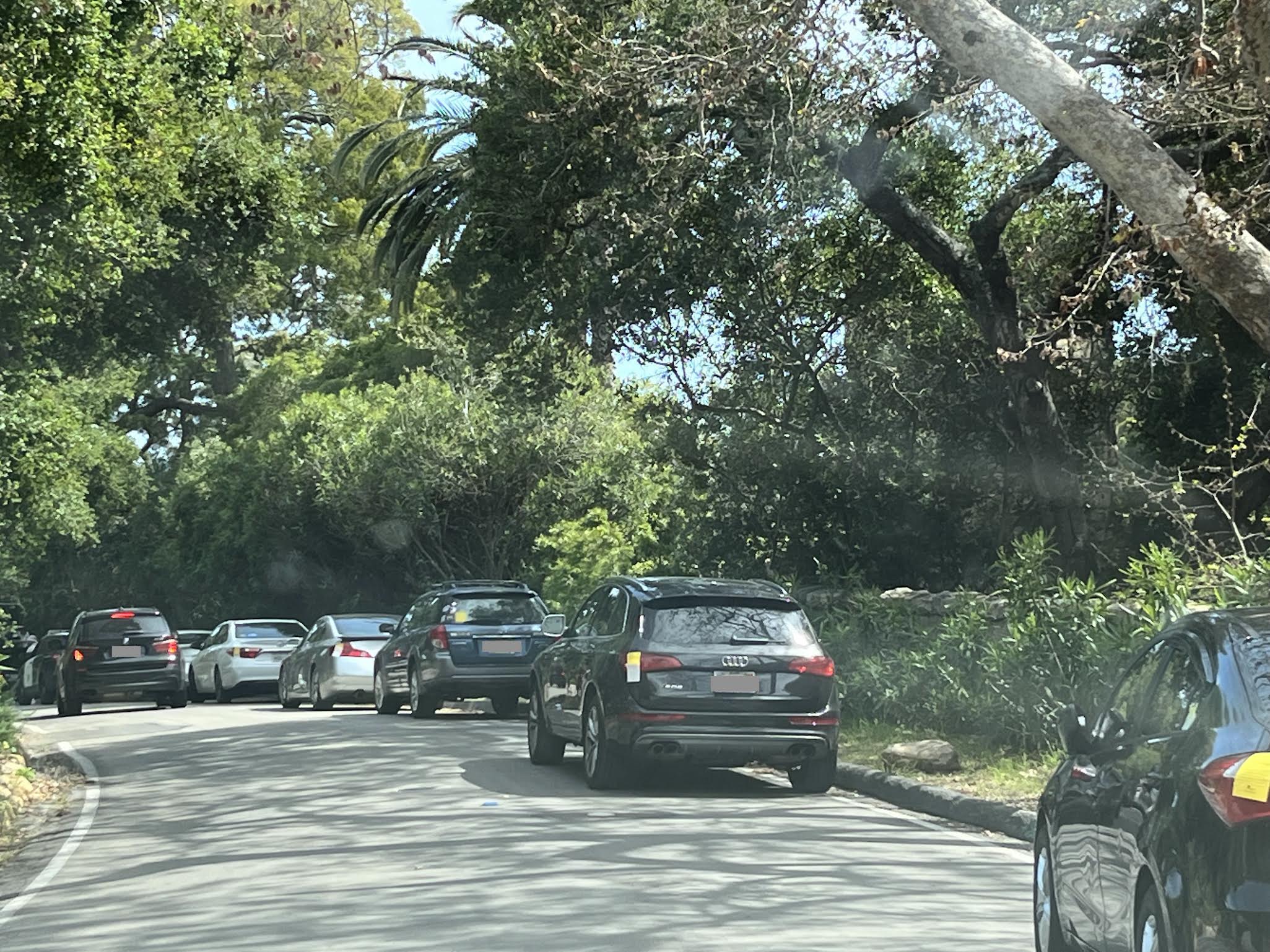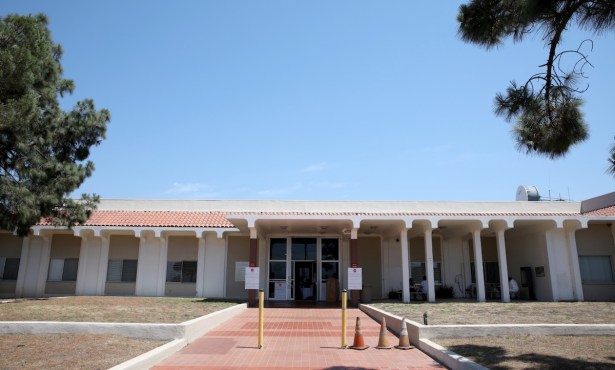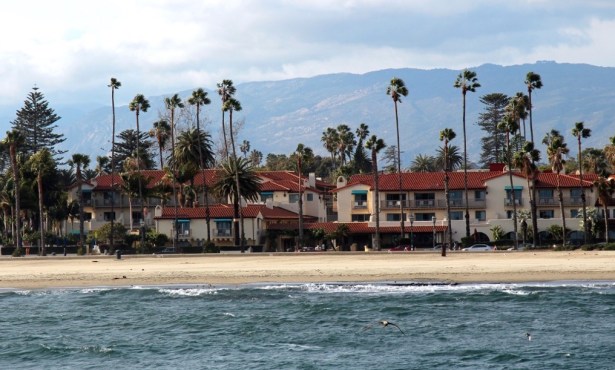Montecito Hot Springs Rocks and Plants Win Again, for Now
Santa Barbara County Ordered to Prepare Environmental Study for Parking Proposal

One of the undeniable hot spots during the pandemic came to be Santa Barbara’s front country trails. For their health, people were advised to exercise out of doors, and when photos of the hot springs in Montecito circulated on social media, Hot Springs Trail became the place to go. But the crowds and their cars developed into a battle between residents and the County of Santa Barbara. On Wednesday, Judge Thomas Anderle ruled that before the county turned the roadway shoulders into on-street parking, it must first go through an environmental analysis to determine the effect on the trail environment from bringing more hikers to the area.
The curious thing about hikers is that none want to park too far away from the head of a trail. Riven Rock Road Ts into East Mountain Drive, very near the eight-car parking area for the Hot Springs Trailhead. The sometimes narrow road became overloaded with cars, and by striping the road, the county eliminated somewhere between 20 and 50 parking spaces. Those parkers went to East Mountain Drive in search of spots for their cars.
The result was “vigilante neighbors,” the county wrote in its brief for the final hearing, who placed “no parking” signs, yellow tape, plants, and rocks in the right of way; some left notes threatening that cars would be towed or a rock put through the window. In this atmosphere, Public Works hired a surveyor to determine the right of way — or the shoulder of the road that belonged to the public — and sent letters to three homeowners advising them to remove their stuff in 10 days or the county would do it for them.
For the county, enforcing an existing legal obligation — that a private individual could not possess what is the public’s — was not a “project” under the rules of the California Environmental Quality Act. If it wasn’t a project, it didn’t need to undergo environmental review.
In actuality, wrote Anderle, who takes on most all of the county’s CEQA cases, a “project” is a broad concept under California’s environmental doctrine. No matter the arguments about encroachments and criminal acts, this was about parking. As such, it was about bringing hikers to the trail who might cause a “potential change” to the trail environment.
One of the bones of contention is how much parking is involved. After the dozens of spots were lost on Riven Rock Road, the county held meetings with the landowners on East Mountain Drive. Public Works officials initially spoke of a dozen new parking spots, but they also pointed out that as many as 62 were possible along the shoulder of the road. Alarmed over the increasing numbers, four of the neighbors got attorneys involved.
Hikers were equally upset over the loss of access to a favorite hiking trail. In a trial brief, the County Counsel’s office quoted one hiker: “Why are the homeowners allowed to illegally annex public easements and intimidate the public?”
Anderle emphasized that the homeowners did not own the public right of way. Their lawsuit was only about the county’s CEQA obligations, he wrote: “It does not — and legally cannot — seek for Petitioners to be granted the exclusive use of public property.”
The homeowners’ attorney — David Cousineau, of Cappello and Noel — iterated Anderle’s point. “We have never taken the position that no parking could be added,” he said. In fact, one of his clients gave the land for the existing eight parking spaces at the trailhead. “The problem has always been the county’s heavy-handed approach: refusing to limit the number of spaces or work with neighbors. So, this ruling does accomplish a lot: The county now has to limit itself to a number of parking spaces that will not have a significant environmental impact.”
Even after the CEQA examination is over and results in “the issuance of a Negative Declaration, issuance of a Mitigated Negative Declaration, or the preparation of an Environmental Impact Report, County could still potentially proceed with the project it currently contemplates — which would include removal of the right-of-way encroachments for some or all of the impacted properties,” Judge Anderle wrote.
The controversy may not end here. Back in October, the county filed an appeal of an earlier judge’s order in the case, an order that temporarily prevented the county from removing anything from the right of way on East Mountain Drive. Judge Donna Geck had rationalized that removal was more harmful than waiting for the case to be resolved. The California State Association of Counties submitted a “friend of the court” brief, which agrees with the county’s position that the injunction was bad public policy for a number of reasons, among them the inability of the county to abate a public nuisance, and that the homeowners should not be allowed to seek a CEQA remedy when they themselves have committed a wrong.
While the homeowners disagree with the county’s position, Cousineau said, “We consider the appeal to be moot because it involved the preliminary injunction. We now have a peremptory writ of mandate precluding the county from doing the work until it complies with CEQA.”



